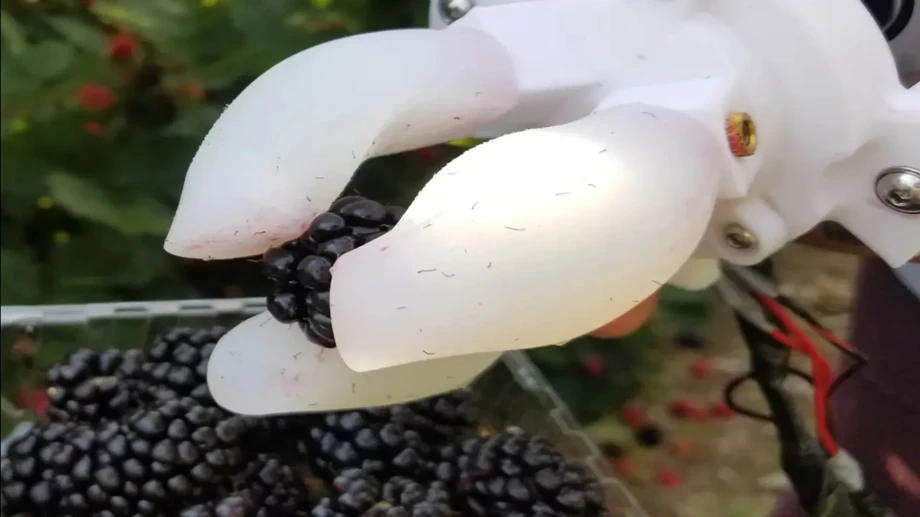A robotic hand capable of picking fresh blackberries with the delicacy of a human touch is now a reality. In the United States, a team of researchers from Arkansas and Georgia has developed an innovative automated system to address the growing labor shortage in the berry harvesting sector.
The harvesting robot
Imagine a bipedal robot equipped with ten arms, each ending in a three-fingered silicone “hand,” moving through rows of fresh blackberries and picking only the ripe fruit with surgical precision. This is the future envisioned by the research team at the Arkansas Agricultural Experiment Station, in collaboration with the University of Georgia and the Georgia Institute of Technology.
At the core of the project is a soft robotic hand, developed to harvest fresh-market blackberries—particularly delicate varieties—without compromising their integrity. The research, led by Renee Threlfall and her team, earned the prestigious “Outstanding Fruit Publication Award” from the American Society for Horticultural Science.
Measuring the required force
It all began in 2020, with measurements of the amount of force needed to pick a blackberry without damaging it. Using special gloves equipped with biometric sensors, PhD student Andrea L. Myers harvested over 2,000 blackberries from farms in Arkansas, including Sta-N-Step Farm and Neal Family Farm. The data revealed that the ideal force to pick a blackberry is about half a Newton—the equivalent of lifting a small chocolate bar.
The study involved four Arkansas-developed varieties: Natchez, Osage, Prime-Ark® Traveler, and Sweet-Ark™ Caddo. The berries were stored for 21 days at 1.6°C to assess the impact of the picking method on postharvest quality. The results showed that three fingers—rather than four—are sufficient for effective picking, and that the sensors do not compromise fruit quality.
A “soft” robotic gripper
In 2021, the second phase began: the team built a three-finger robotic gripper operated by tendons made from guitar strings. The system was tested on blackberry harvesting with promising results. Even after 21 days in cold storage, the fruit showed limited damage, despite an 11% increase in juice loss and a 7% rise in “red drupelet reversion”—a phenomenon where some blackberry drupelets turn red again, indicating cellular damage.
“The red color that appears after harvesting,” Threlfall explains, “does not indicate immaturity, but rather physical damage, and can lead to the rejection of the product under USDA standards.”
An automated future
This technology represents a major step forward in the automation of fresh berry harvesting, a sector that still heavily relies on manual labor. If future developments can further minimize fruit damage, the robotic hand could become an indispensable tool in orchards around the world, not just in Arkansas.
Text and image source: farmprogress.com










